The use of “substances of pleasure and conviviality”, particularly in the form of chewing, is one of the oldest human activities, and each region has its speciality: coca in America, khat in the Middle East, betel in Asia. In French, it is indeed “betel” that names this chique containing several other ingredients; this name, of Malabar origin, appears in travel accounts as early as 1515, but with great inaccuracies both about the plant and about its uses and adjuvants. In all the cultures of Southeast Asia where this practice is established, it is sometimes betel and sometimes areca nut, another essential ingredient, that allows the names, the different uses and the symbolisms to be defined. In Lao, for example, we say kiao maak “chew the areca nut” and all the rites surrounding this use refer to the areca nut.
Betel is a pepper, a climbing plant, existing spontaneously in the dense forests of the Indo-Malayan region; it is cultivated in the shelter of trees that give it shade and support, areca trees when possible. It can be recognised by its simple heart-shaped leaves, with well-marked veins, of a beautiful shiny dark green.
The use of chewing this leaf is over 2000 years old and extends from Ceylon to New Guinea, although it is not clear where it originated. The basic ingredients are the betel leaf which serves as a wrapper, lime which is spread on it and a slice of areca nut; condiments such as nutmeg, clove, cardamom, tobacco, jackfruit bark and many others are often added. This chew is chewed for a long time, and the red saliva that results (due to the tannin of the nut) is spat out or partly swallowed. During the chewing process, the different ingredients can be readjusted, for example, a little more areca moderates the bitterness of the betel.
About fifty years ago, in Laos, people chewed every day, men, women especially, even children, to whom mothers gave a chew to attenuate its strength, and on all religious or profane occasions.
This chew was said to give a feeling of well-being, to be a hunger and fatigue suppressant and to give good breath. It was also thought that chewing protects the teeth.
Nowadays people hardly chew anymore in Laos. Indeed, betel blackens the teeth, which is incompatible with Western beauty standards; the regular spitting of red saliva is unacceptable given the rules of hygiene; the ingredients of chewing, which can be beneficial in small doses, are in the long run dangerous for health, and have been classified as carcinogenic by the IARC (International Agency for Research on Cancer)
But this practice, which was once widespread, is still full of symbols and beliefs, the core of which is the alliance between areca and betel, inscribed in the cultural (the betel vine climbs the areca tree), and in the cultural, betel is hot while areca is cold, betel is bitter and astringent while areca is sweet and sedative, and their union in the chique will be the symbol of all unions: union the of humans in love, friendship, conviviality, union with supernatural beings, gods and genies.
Thus the practice of chewing betel lives on symbolically in Lao society.
L’usage de « substances du plaisir et de la convivialité », en particulier sous la forme de masticatoire, est l’une des activités les plus anciennes de l’homme, et chaque région a sa spécialité: la coca en Amérique, le khat au Moyen Orient, le bétel en Asie. En français, c’est en effet le « bétel » qui nomme cette chique contenant pourtant plusieurs autres ingrédients; ce nom, d’origine malabar, apparaît dans les récits de voyage dès 1515, mais avec de grandes imprécisions aussi bien sur la plante que sur ses usages et ses adjuvants. Dans toutes les cultures de l’Asie du Sud Est où cette pratique est implantée, c’est tantôt le bétel tantôt la noix d’arec, autre ingrédient essentiel, qui permet d’en décliner les noms, les différentes utilisations et les symbolismes. Ainsi, en lao, on dit kiao maak « chiquer la noix d’arec » et l’ensemble des rites autour de cet usage fait référence à la noix d’arec.
Le bétel est un poivre, une plante grimpante, existant à l’état spontané dans les forêts denses de la région indo-malaise; on le cultive à l’abri d’arbres qui lui donnent ombre et support, des aréquiers quand c’est possible. On le reconnait à ses feuilles simples en forme de cœur, aux nervures bien marquées, d’un beau vert foncé brillant.
L’usage de chiquer cette feuille a plus de 2000 ans, il s’étend de Ceylan à la Nouvelle-Guinée sans que l’on sache bien où il a pris naissance. Les ingrédients de base sont la feuille de bétel qui sert d’enveloppe, la chaux qui est étalée dessus et une lamelle de noix d’arec; sont souvent rajoutées des plantes condiments comme la noix muscade, la girofle, la cardamome, le tabac, l’écorce de jaque et bien d’autres. Cette chique est mâchée longuement, la salive rouge qui en résulte (à cause du tanin de la noix) est recrachée ou en partie avalée. En cours de mastication les différents ingrédients qui la composent peuvent être réajustés, par exemple un peu plus d’arec modère l’amertume du bétel.
Il y a une cinquantaine d’années, au Laos, on chiquait quotidiennement, les hommes, les femmes surtout, les enfants mêmes auxquels les mères donnaient une chique déjà mâchée pour en atténuer la force, et dans toutes les occasions religieuses ou profanes.
Cette chique passait pour procurer une sensation de bien-être, pour être un coupe faim et un coupe fatigue et pour donner bonne haleine. On pensait en outre que chiquer protégeait les dents.
Aujourd’hui on ne chique pratiquement plus au Laos. En effet, le bétel noircit les dents ce qui est incompatible avec les canons de beauté occidentaux ; le jet de salive rouge recraché régulièrement est, lui, inacceptable au vue des règles d’hygiène; les ingrédients de la chique qui peuvent être bénéfiques à petites doses, sont à la longue dangereux pour la santé, et ont été classés comme cancérigènes par le CIRC (Centre International de Recherche sur le Cancer).
Mais cette pratique autrefois très répandue, reste aujourd’hui encore chargée de symboles et de croyances dont le noyau dur est l’alliance de l’arec et du bétel inscrite dans le cultural (la liane du bétel grimpe sur l’aréquier), et dans le culturel, le bétel est chaud tandis que l’arec est froid, le bétel est amer et astringent alors que l’arec est doux et sédatif et leur union dans la chique sera le symbole de toutes les unions: union des humains dans l’amour, l’amitié, la convivialité, union avec les êtres surnaturels, dieux et génies.
Ainsi la pratique qui consiste à chiquer le bétel continue à vivre symboliquement dans la société lao.
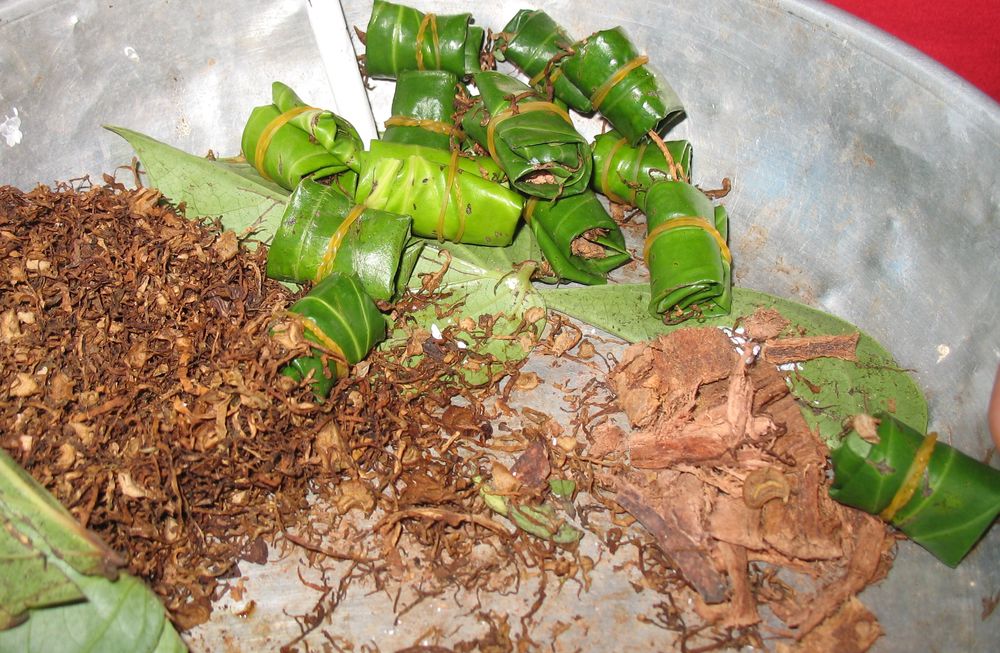
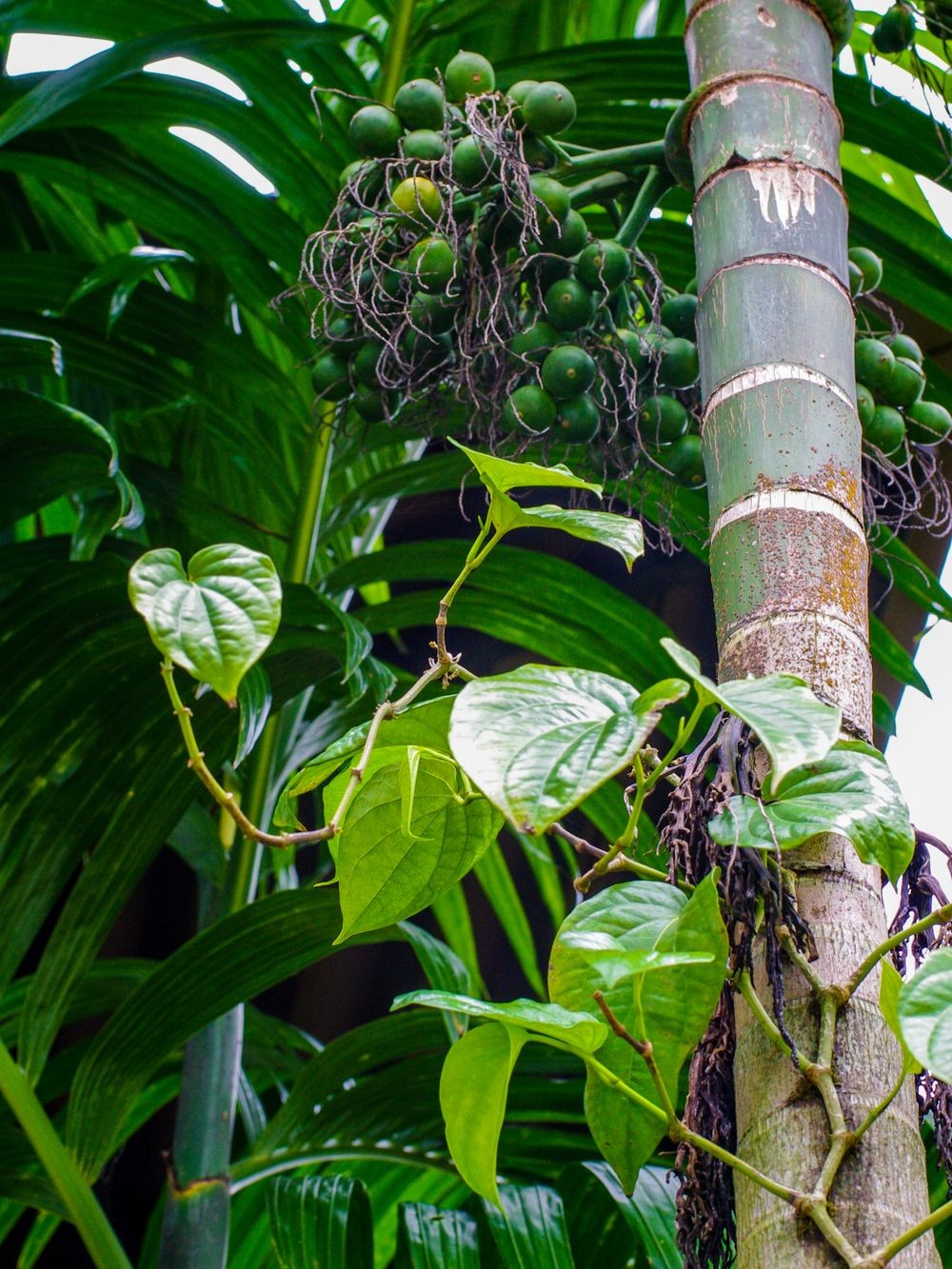
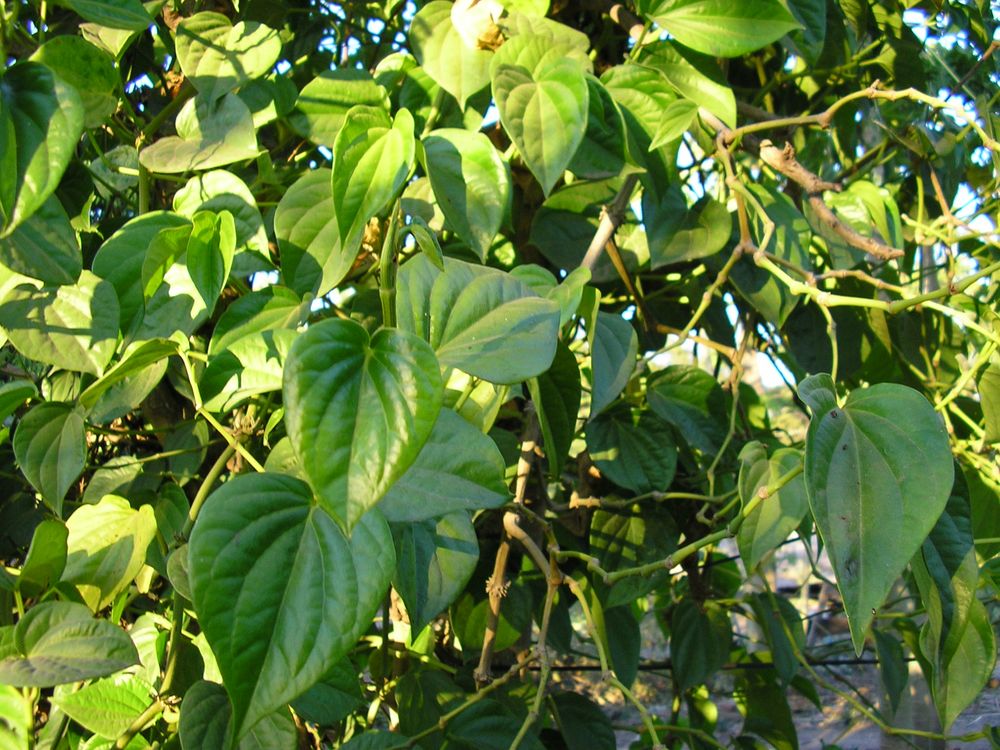
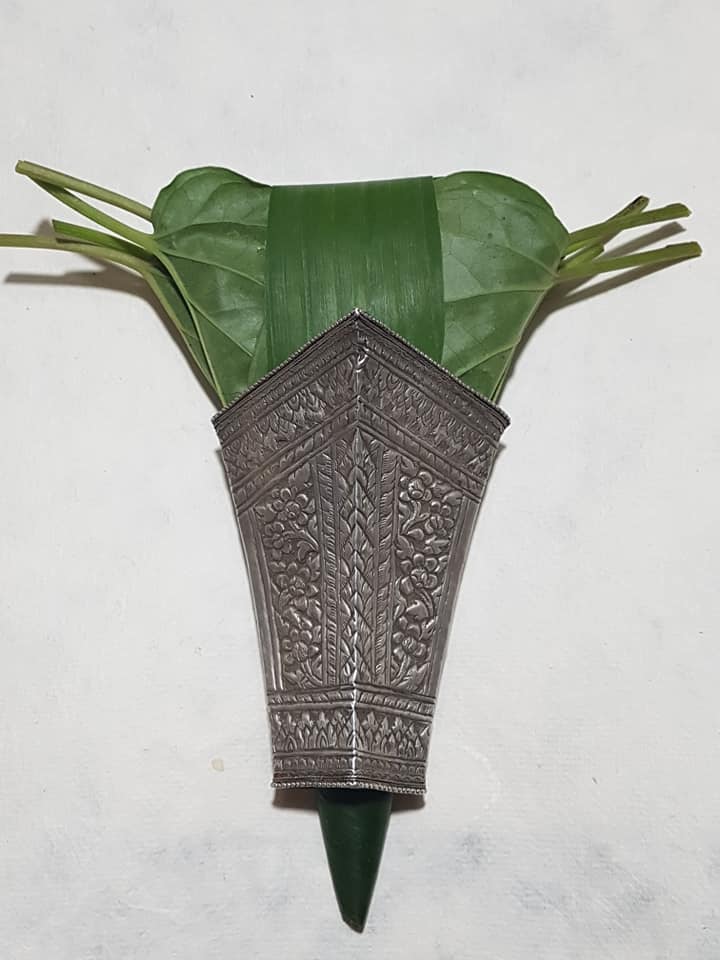
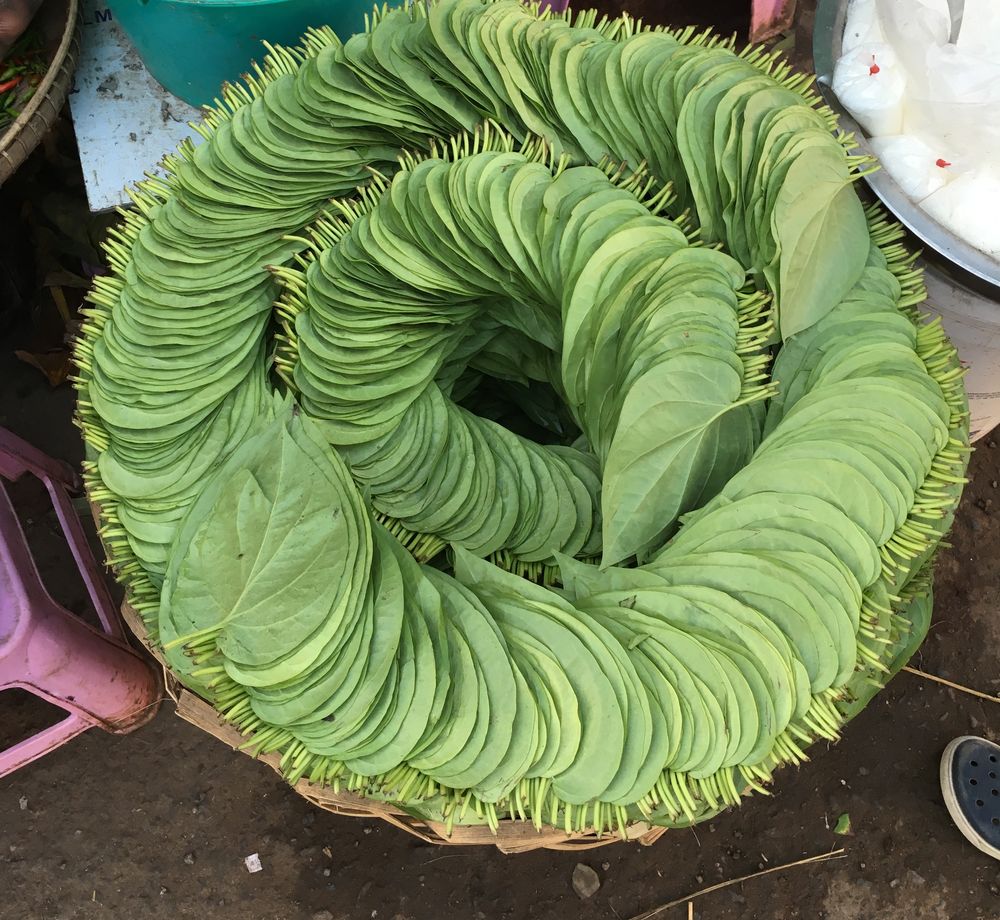
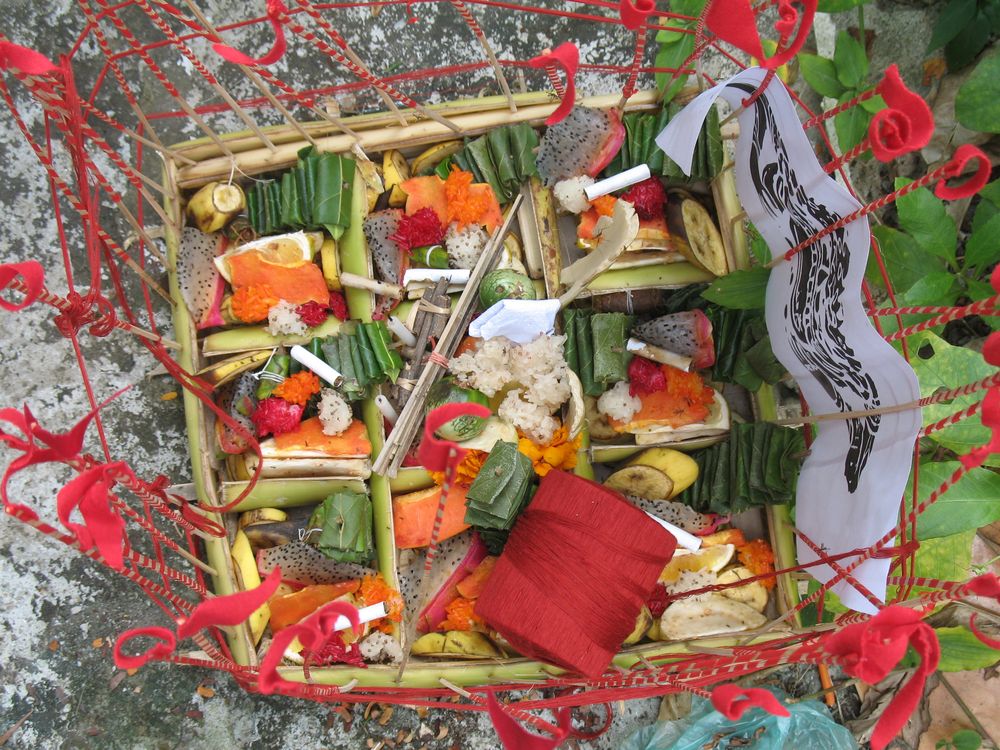
The use of “substances of pleasure and conviviality”, particularly in the form of chewing, is one of the oldest human activities, and each region has its speciality: coca in America, khat in the Middle East, betel in Asia. In French, it is indeed “betel” that names this chique containing several other ingredients; this name, of Malabar origin, appears in travel accounts as early as 1515, but with great inaccuracies both about the plant and about its uses and adjuvants. In all the cultures of Southeast Asia where this practice is established, it is sometimes betel and sometimes areca nut, another essential ingredient, that allows the names, the different uses and the symbolisms to be defined. In Lao, for example, we say kiao maak “chew the areca nut” and all the rites surrounding this use refer to the areca nut.
Betel is a pepper, a climbing plant, existing spontaneously in the dense forests of the Indo-Malayan region; it is cultivated in the shelter of trees that give it shade and support, areca trees when possible. It can be recognised by its simple heart-shaped leaves, with well-marked veins, of a beautiful shiny dark green.
The use of chewing this leaf is over 2000 years old and extends from Ceylon to New Guinea, although it is not clear where it originated. The basic ingredients are the betel leaf which serves as a wrapper, lime which is spread on it and a slice of areca nut; condiments such as nutmeg, clove, cardamom, tobacco, jackfruit bark and many others are often added. This chew is chewed for a long time, and the red saliva that results (due to the tannin of the nut) is spat out or partly swallowed. During the chewing process, the different ingredients can be readjusted, for example, a little more areca moderates the bitterness of the betel.
About fifty years ago, in Laos, people chewed every day, men, women especially, even children, to whom mothers gave a chew to attenuate its strength, and on all religious or profane occasions.
This chew was said to give a feeling of well-being, to be a hunger and fatigue suppressant and to give good breath. It was also thought that chewing protects the teeth.
Nowadays people hardly chew anymore in Laos. Indeed, betel blackens the teeth, which is incompatible with Western beauty standards; the regular spitting of red saliva is unacceptable given the rules of hygiene; the ingredients of chewing, which can be beneficial in small doses, are in the long run dangerous for health, and have been classified as carcinogenic by the IARC (International Agency for Research on Cancer)
But this practice, which was once widespread, is still full of symbols and beliefs, the core of which is the alliance between areca and betel, inscribed in the cultural (the betel vine climbs the areca tree), and in the cultural, betel is hot while areca is cold, betel is bitter and astringent while areca is sweet and sedative, and their union in the chique will be the symbol of all unions: union the of humans in love, friendship, conviviality, union with supernatural beings, gods and genies.
Thus the practice of chewing betel lives on symbolically in Lao society.
L’usage de « substances du plaisir et de la convivialité », en particulier sous la forme de masticatoire, est l’une des activités les plus anciennes de l’homme, et chaque région a sa spécialité: la coca en Amérique, le khat au Moyen Orient, le bétel en Asie. En français, c’est en effet le « bétel » qui nomme cette chique contenant pourtant plusieurs autres ingrédients; ce nom, d’origine malabar, apparaît dans les récits de voyage dès 1515, mais avec de grandes imprécisions aussi bien sur la plante que sur ses usages et ses adjuvants. Dans toutes les cultures de l’Asie du Sud Est où cette pratique est implantée, c’est tantôt le bétel tantôt la noix d’arec, autre ingrédient essentiel, qui permet d’en décliner les noms, les différentes utilisations et les symbolismes. Ainsi, en lao, on dit kiao maak « chiquer la noix d’arec » et l’ensemble des rites autour de cet usage fait référence à la noix d’arec.
Le bétel est un poivre, une plante grimpante, existant à l’état spontané dans les forêts denses de la région indo-malaise; on le cultive à l’abri d’arbres qui lui donnent ombre et support, des aréquiers quand c’est possible. On le reconnait à ses feuilles simples en forme de cœur, aux nervures bien marquées, d’un beau vert foncé brillant.
L’usage de chiquer cette feuille a plus de 2000 ans, il s’étend de Ceylan à la Nouvelle-Guinée sans que l’on sache bien où il a pris naissance. Les ingrédients de base sont la feuille de bétel qui sert d’enveloppe, la chaux qui est étalée dessus et une lamelle de noix d’arec; sont souvent rajoutées des plantes condiments comme la noix muscade, la girofle, la cardamome, le tabac, l’écorce de jaque et bien d’autres. Cette chique est mâchée longuement, la salive rouge qui en résulte (à cause du tanin de la noix) est recrachée ou en partie avalée. En cours de mastication les différents ingrédients qui la composent peuvent être réajustés, par exemple un peu plus d’arec modère l’amertume du bétel.
Il y a une cinquantaine d’années, au Laos, on chiquait quotidiennement, les hommes, les femmes surtout, les enfants mêmes auxquels les mères donnaient une chique déjà mâchée pour en atténuer la force, et dans toutes les occasions religieuses ou profanes.
Cette chique passait pour procurer une sensation de bien-être, pour être un coupe faim et un coupe fatigue et pour donner bonne haleine. On pensait en outre que chiquer protégeait les dents.
Aujourd’hui on ne chique pratiquement plus au Laos. En effet, le bétel noircit les dents ce qui est incompatible avec les canons de beauté occidentaux ; le jet de salive rouge recraché régulièrement est, lui, inacceptable au vue des règles d’hygiène; les ingrédients de la chique qui peuvent être bénéfiques à petites doses, sont à la longue dangereux pour la santé, et ont été classés comme cancérigènes par le CIRC (Centre International de Recherche sur le Cancer).
Mais cette pratique autrefois très répandue, reste aujourd’hui encore chargée de symboles et de croyances dont le noyau dur est l’alliance de l’arec et du bétel inscrite dans le cultural (la liane du bétel grimpe sur l’aréquier), et dans le culturel, le bétel est chaud tandis que l’arec est froid, le bétel est amer et astringent alors que l’arec est doux et sédatif et leur union dans la chique sera le symbole de toutes les unions: union des humains dans l’amour, l’amitié, la convivialité, union avec les êtres surnaturels, dieux et génies.
Ainsi la pratique qui consiste à chiquer le bétel continue à vivre symboliquement dans la société lao.












The use of “substances of pleasure and conviviality”, particularly in the form of chewing, is one of the oldest human activities, and each region has its speciality: coca in America, khat in the Middle East, betel in Asia. In French, it is indeed “betel” that names this chique containing several other ingredients; this name, of Malabar origin, appears in travel accounts as early as 1515, but with great inaccuracies both about the plant and about its uses and adjuvants. In all the cultures of Southeast Asia where this practice is established, it is sometimes betel and sometimes areca nut, another essential ingredient, that allows the names, the different uses and the symbolisms to be defined. In Lao, for example, we say kiao maak “chew the areca nut” and all the rites surrounding this use refer to the areca nut.
Betel is a pepper, a climbing plant, existing spontaneously in the dense forests of the Indo-Malayan region; it is cultivated in the shelter of trees that give it shade and support, areca trees when possible. It can be recognised by its simple heart-shaped leaves, with well-marked veins, of a beautiful shiny dark green.
The use of chewing this leaf is over 2000 years old and extends from Ceylon to New Guinea, although it is not clear where it originated. The basic ingredients are the betel leaf which serves as a wrapper, lime which is spread on it and a slice of areca nut; condiments such as nutmeg, clove, cardamom, tobacco, jackfruit bark and many others are often added. This chew is chewed for a long time, and the red saliva that results (due to the tannin of the nut) is spat out or partly swallowed. During the chewing process, the different ingredients can be readjusted, for example, a little more areca moderates the bitterness of the betel.
About fifty years ago, in Laos, people chewed every day, men, women especially, even children, to whom mothers gave a chew to attenuate its strength, and on all religious or profane occasions.
This chew was said to give a feeling of well-being, to be a hunger and fatigue suppressant and to give good breath. It was also thought that chewing protects the teeth.
Nowadays people hardly chew anymore in Laos. Indeed, betel blackens the teeth, which is incompatible with Western beauty standards; the regular spitting of red saliva is unacceptable given the rules of hygiene; the ingredients of chewing, which can be beneficial in small doses, are in the long run dangerous for health, and have been classified as carcinogenic by the IARC (International Agency for Research on Cancer)
But this practice, which was once widespread, is still full of symbols and beliefs, the core of which is the alliance between areca and betel, inscribed in the cultural (the betel vine climbs the areca tree), and in the cultural, betel is hot while areca is cold, betel is bitter and astringent while areca is sweet and sedative, and their union in the chique will be the symbol of all unions: union the of humans in love, friendship, conviviality, union with supernatural beings, gods and genies.
Thus the practice of chewing betel lives on symbolically in Lao society.
L’usage de « substances du plaisir et de la convivialité », en particulier sous la forme de masticatoire, est l’une des activités les plus anciennes de l’homme, et chaque région a sa spécialité: la coca en Amérique, le khat au Moyen Orient, le bétel en Asie. En français, c’est en effet le « bétel » qui nomme cette chique contenant pourtant plusieurs autres ingrédients; ce nom, d’origine malabar, apparaît dans les récits de voyage dès 1515, mais avec de grandes imprécisions aussi bien sur la plante que sur ses usages et ses adjuvants. Dans toutes les cultures de l’Asie du Sud Est où cette pratique est implantée, c’est tantôt le bétel tantôt la noix d’arec, autre ingrédient essentiel, qui permet d’en décliner les noms, les différentes utilisations et les symbolismes. Ainsi, en lao, on dit kiao maak « chiquer la noix d’arec » et l’ensemble des rites autour de cet usage fait référence à la noix d’arec.
Le bétel est un poivre, une plante grimpante, existant à l’état spontané dans les forêts denses de la région indo-malaise; on le cultive à l’abri d’arbres qui lui donnent ombre et support, des aréquiers quand c’est possible. On le reconnait à ses feuilles simples en forme de cœur, aux nervures bien marquées, d’un beau vert foncé brillant.
L’usage de chiquer cette feuille a plus de 2000 ans, il s’étend de Ceylan à la Nouvelle-Guinée sans que l’on sache bien où il a pris naissance. Les ingrédients de base sont la feuille de bétel qui sert d’enveloppe, la chaux qui est étalée dessus et une lamelle de noix d’arec; sont souvent rajoutées des plantes condiments comme la noix muscade, la girofle, la cardamome, le tabac, l’écorce de jaque et bien d’autres. Cette chique est mâchée longuement, la salive rouge qui en résulte (à cause du tanin de la noix) est recrachée ou en partie avalée. En cours de mastication les différents ingrédients qui la composent peuvent être réajustés, par exemple un peu plus d’arec modère l’amertume du bétel.
Il y a une cinquantaine d’années, au Laos, on chiquait quotidiennement, les hommes, les femmes surtout, les enfants mêmes auxquels les mères donnaient une chique déjà mâchée pour en atténuer la force, et dans toutes les occasions religieuses ou profanes.
Cette chique passait pour procurer une sensation de bien-être, pour être un coupe faim et un coupe fatigue et pour donner bonne haleine. On pensait en outre que chiquer protégeait les dents.
Aujourd’hui on ne chique pratiquement plus au Laos. En effet, le bétel noircit les dents ce qui est incompatible avec les canons de beauté occidentaux ; le jet de salive rouge recraché régulièrement est, lui, inacceptable au vue des règles d’hygiène; les ingrédients de la chique qui peuvent être bénéfiques à petites doses, sont à la longue dangereux pour la santé, et ont été classés comme cancérigènes par le CIRC (Centre International de Recherche sur le Cancer).
Mais cette pratique autrefois très répandue, reste aujourd’hui encore chargée de symboles et de croyances dont le noyau dur est l’alliance de l’arec et du bétel inscrite dans le cultural (la liane du bétel grimpe sur l’aréquier), et dans le culturel, le bétel est chaud tandis que l’arec est froid, le bétel est amer et astringent alors que l’arec est doux et sédatif et leur union dans la chique sera le symbole de toutes les unions: union des humains dans l’amour, l’amitié, la convivialité, union avec les êtres surnaturels, dieux et génies.
Ainsi la pratique qui consiste à chiquer le bétel continue à vivre symboliquement dans la société lao.


